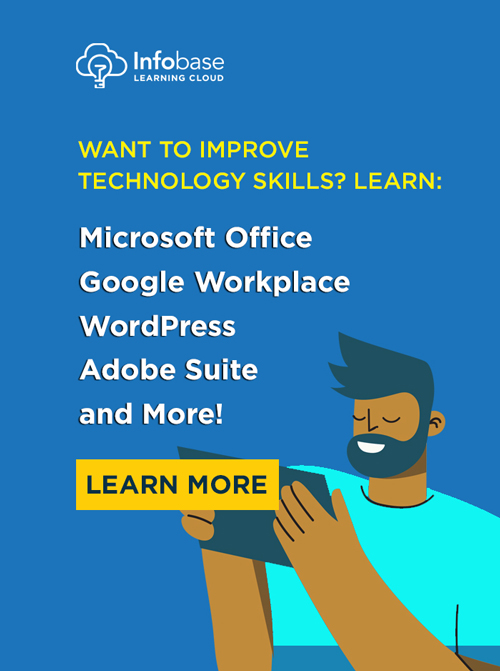This spring, many college students will prepare for life after graduation. Many undergraduates, graduates, and reskilling alumni will start their job searches in a market that is geared toward employees. If students are just starting right now, they are already behind.
There are two types of currency job seekers must need and understand to put themselves in a job market that will pay benefits to them: performance currency and relationships currency. Performance currency is linked to how well you know your field, if you can deliver proven results, and what your unique value proposition is. Relationship currency is the main thing that will help job seekers in their career navigation; the idea that it’s not always what you know but who you know will be key in their job searches. It is a proven fact that 80% of all jobs come from relationships; networking is major to one’s future and career mobility.
Skill-building is especially important for majors with less linear career pathways, like those within social sciences or the liberal arts. Students may need to learn additional skills outside of the classroom to be competitive in the workforce. This is where microcredentials can help.
What Are Microcredentials?
The root of the idea of microcredentials is simple: you demonstrate a very specific skill, and it becomes part of your educational attainment and competencies that include certifications and credentials that can help build your resume, especially if you’re a college student. Microcredentials are earned through a learn-by-doing process, allowing students to submit evidence from their own classroom practice to demonstrate their skills. They are offered as part of a partnership between business and education, combining the educational experience of one institution with the industry knowledge of the other. Examples of microcredentials include computer support specialist, grant writing, project management. total quality logistics, Six Sigma, universal design and learning, digital literacy, assessment literacy, and even diversity, equity, and inclusion. When organizations look at resumes, many hiring managers look for outlier skills like microcredentials when considering advancing a candidate.
Why Should Career Service Departments and Higher Education Support and Promote Microcredentials?
 With employers building learning options and, thus, helping to fill skills gaps and create the digital workforce of the future, employer-issued microcredentials offer nondegree pathways into careers and professional advancement—and are becoming a major part of the broader trend toward skills-based hiring. Earning certificates on focused knowledge can help learners and college students be more marketable and prove they are staying at the leading edge of their profession as that profession changes.
With employers building learning options and, thus, helping to fill skills gaps and create the digital workforce of the future, employer-issued microcredentials offer nondegree pathways into careers and professional advancement—and are becoming a major part of the broader trend toward skills-based hiring. Earning certificates on focused knowledge can help learners and college students be more marketable and prove they are staying at the leading edge of their profession as that profession changes.
At most institutions, implementing a microcredential certification program is scalable and cost effective and adds value to a student earning a degree. Majors that sometimes suffer in the job market now have a viable way to be seen, engaged, and supported. For the institution, they can amplify visibility, enhance its reputation, and reach a global audience, which can help improve student enrollment rates. They can enable a higher education setting to respond to both the labor markets and the students’ needs.
For students, microcredentials allow the opportunity to gain further knowledge in a niche area and bring them together with like-minded individuals and top teaching talent, irrespective of their location. It can also open the door to leadership. Imagine a math major who is doing their internship or practicum with a school district and is highly skilled at formative assessment. You might ask that student intern to become an assessor, someone who looks at the evidence of other teachers or high school student surveys. This puts that student intern in a position of leadership, where they can provide feedback, collaborate with peers, or school leadership, share expertise and be seen as an expert by colleagues and someone they would want to hire.
Microcredentials can also address disadvantaged or underserved students of color groups. Within most students of color groups, there is a bustling minority of entrepreneurs who do photography, graphic design, Google analytics, social media marketing, and more. In my undergraduate years, for example, I earned a certified marketing professional (CMP) credential that helped me land my first job out of college. Imagine a student learning and creating a pathway toward entrepreneurship, which can be helped through microcredentials.

At my current institution, 50% of students surveyed are interested in owning their own business or have a side business besides a regular day job. By targeting this group, you can address retention rates and salary earnings, and close equity gaps and skill gaps. Add this possibility along with internships or apprenticeships, and you build upon your first-destination survey (FDS) and long-term adaptability on career mobility for students. It even speaks to social mobility, which is a change in social status that can help first-generation and low-income students.
How Can Career Services Implement a Microcredential Program?
To implement a microcredential program within career services at a university or college, there must be buy-in from the academic affairs, University leadership, and career service departments. You must understand your WHY, implement a plan, then have a phase two where you address questions and prepare to launch with learning outcomes. Think of it as the ability to increase internships—the ability to partner with local businesses and organizations who can help you define and create the needs around the microcredentials. You can align yourself with a national accrediting body on microcredentials, like the National Education Association (NEA). You have current institutions like Post University, the University of Maine System and The State University of New York or The University of Wisconsin-Extension, all currently offering such opportunities to their students or even their alumni base. The ability to have alumni come back and upskill with a microcredential adds value to their degrees and long-term institutional engagement.
With funding being an issue for many universities/colleges, microcredentials can help career development departments drive new revenue sources and build a network of employers to another level. Many will argue, “Is this not what community colleges are doing already?” Well, in some conversations, yes, but if we dive into data and talk to current employers, building a skill-ready society is at the forefront of a changing workforce. 50% of jobs will look different by the year 2035. Stack this on top of what artificial intelligence will do within most industries, and we can make a choice to adapt and innovate or, as I like to say, you can be at the table or on the menu. This will require those working in career development departments to be willing to change and not stand on typical vanilla practices, even when it comes to diversity, equity, and inclusion as we adapt more in that space, where employers have really spent a lot of time, talent, and treasure trying to embrace demographic changes.
With more than 73% of college graduates not going into or working in their intended major after college (Burnett and Evans 2016), the ability to offer these certifications creates an ecosystem that benefits not only your current students but even alumni who want to come back for upskilling or reskilling in a job market that is ever changing. Recently the University of Texas System partnered with Google Certificates to offer all students the ability to learn and pick up job-ready skills in the fields of data analytics, e-commerce and digital marketing, IT Support, automation in Python, project management, and user experience (UX) design. This is a game changer when Generation Z is a more of digital and automated group that has grown up on technology. As the jobs of the future will demand high skills and technology, the ability to have a bachelor’s degree and certification is a winning strategy. In Texas, by 2030, more than 60% of jobs alone will require a postsecondary credential, such as a degree or certificate.
Needless to say, the future of microcredentials will only increase as the economy and skills needed become more apparent in the workforce. This is the place career service departments can lead, increase their first-destination survey outcomes, and support certain majors. This service offering would provide the utmost flexibility to the learner and even the educational setting itself. Many of the credentials can be stand-alone e-learning courses or even done on one’s own time with technology. We must think of career development education in multiple ways that bridge what’s current to the future of work. In addition, microcredentials offer a way to increase job seekers’ skill sets around their current lifestyle and learning style. As microcredentialing grows rapidly in popularity among employers, we must adapt in higher education to meet the future needs of education, employers, and the workforce.
See also:
- Motivate Continuous Learning with Digital Badges
- How to Upskill Yourself Toward Professional Advancement
- How to Foster a Culture of Learning in the Digital Workplace
Reference:
Burnett, Bill and Dave Evans. Designing Your Life: How to Build a Well-Lived, Joyful Life. New York: Alfred A. Knopf, 2018.


